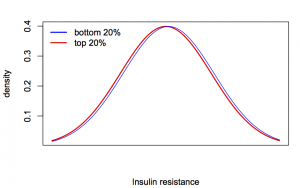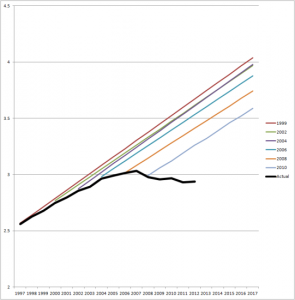From Stuff, in a story about the new child-seat law not being broad enough
New Zealand has the third-highest child road death toll in the OECD, [a group of paediatric specialists] say in this month’s New Zealand Medical Journal.
This group are arguing for child restraints up to age 11, rather than age 7. As you know, I’m skeptical about claims like ‘third-highest’, so I looked at the NZ Medical Journal article. Its claim isn’t as strong
New Zealand compares unfavourably to other OECD countries for child traffic crash-related trauma[2]
And reference 2 is
- New Zealand Transport Agency. Child Restraints Fact Sheet 07. Wellington: New Zealand Transport Agency, 2012
which, as you can see for yourself, doesn’t say anything at all about OECD comparisons. Presumably that’s just an editing error in the NZMJ paper, but as far as I can tell, none of the other references were OECD documents either.
The closest thing to OECD statistics I can find on the internets is this 2004 report, based on data from 1996-2000. It does show NZ third out of the set of countries with good enough data to be in the table, so I suspect it’s the source of the statistic. It’s a bit out of date, is nowhere near all of the current OECD, and is for all children 0-14, when the story is about needing child restraints for children 7-11.
The NZ data in the NZMJ article are more up-to-date (2000-2009), but are only for infants 0-4, who have been required to been in proper child seats for the last twenty years, so those data are irrelevant to the point being made.
So in this case the ‘3rd worse’ statistic is true(ish), but you can’t find it where Stuff attributes it, and you can’t find it where the NZMJ paper attributes it. And it’s based on data from a time when the overall NZ road toll (per capita) was twice what it is now, and the number of deaths in children under 14 was three times what it is now.
It’s a good thing the statistic isn’t really relevant to the campaign.
[update: in comments, Glen Koorey has found up-to-date information. New Zealand is currently 10th out of 29 countries in 0-14 road deaths]




